1953
Born in Dortmund, the only boy in a family of five, with two elder
and two younger sisters. His father is director of the
Katharina-Elisabeth colliery, his mother a dermatologist.
1956
The family moves to Essen. He spends six years at a ‘strict,
evangelical’ school in the Black Forest. Shows great artistic talent
even as a child, although he skips art classes after his teacher
gives him only the second highest grade, feeling that this grade is
unfair.
1967
Attempts to maintain control over his freedom of movement by going
to the dance hall; aged 14, is told by dance teacher Anne Blomke,
‘Herr Kippenberger, don’t waggle your behind like that.’ This
exaggeration is a deciding factor. Cherishes ambitions thereafter to
become the third best dancer in Europe.
1968
After taking his fourth-year exam three times he decides to leave
school and pursue a practical career. Rejected as a trainee by the
Böhmer shoe store for having ‘too much talent’. Starts a course in
window dressing with the Boecker clothing store.
1969
Fired from his job for taking drugs. Trip to Scandinavia.
1970
Has therapy at a farm near Hamburg. Discharged as cured.
1971
Moves to Hamburg and lives in various communes. Meets Ina Barfuss,
Joachim Krüger and Thomas Wachweger.
1972
Begins studying at the Hamburg Art Academy (Hochschule für bildende
Kunst). Quits after sixteen semesters.
1976
Leaves Hamburg for Florence, hoping to become an actor. Paints the
first canvases in his series Uno di voi, un tedesco in Firenze.
All these works are in the same format, 50 x 60 cm, in black and
white, mainly based on postcards or on photos taken by himself.
However, the project remains incomplete. The idea was for the frames
of the pictures, when stacked together, to reach his own height of
189 cm, but the end result (around 70 works) falls 10 cm short.
1977
Returns to Hamburg. First one-man show of his Florence pictures at
the Petersen Gallery. Meets Werner Büttner and Albert Oehlen.
1978
Moves to Berlin. Founds Kippenberger’s Büro with Gisela Capitain.
At the same time becomes manager of the famous S.O. 36 club, a venue
for the film festivals and concerts he organises (including
performances by Lydia Lunch, Wire, Adam and the Ants, and the Iggy
Pop drummer). Also mounts exhibitions in the Office. Founds The
Grugas punk band. Makes his first single, ‘Luxus’, with Christine
Hahn and Eric Mitchell.
1979
Kippenberger’s Büro shows the exhibition Misery, including
works by Werner Büttner, Achim Duchow, Walter Dahn and Georg Herold.
Meets Michel Würthle, the owner of the Paris Bar in Berlin. Donates
works of his own to the restaurant on permanent loan. Goes on a trip
to the United States, resulting in works in sound and pictures by
himself and Achim Schächtele entitled Vassals of Tourism
and shown in the Cafe Einstein, Berlin. The professional poster
artist Hans Siebert paints the series of twelve works Dear
Painter, Paint for Me from ideas by Kippenberger.
Buys early works by Ina Barfuss and Thomas Wachweger for his own
collection. Meets his future gallerist Max Hetzler. Acts in three
films directed by women: Christel Kaufmann’s Gibby West Germany,
Ulrike Oettinger’s Bildnis einer Trinkerin [Portrait of
a Woman Drunk] and Gisela Stelli’s Liebe Sehnsucht
Abenteuer [Love Yearning Adventure], after which he
abandons his career in films. His models: Albert Finney in Under the
Volcano and Ben Gazzara in The Killing of a Chinese Bookie.
1980
Moves to Paris, intending to become a writer, lives in hotels on the
Left Bank. Works on his first novel, excerpts from which are used in
1981 in the series of events entitled Through Puberty to
Success.
1981
Visits Siena, then spends some time working in the Black Forest and
Stuttgart. First series of paintings using colour, shown at the
Hetzler Gallery in Stuttgart under the title A Secret of the
Success of Mr A. Onassis.
1982
Collaborates with Albert Oehlen on such works as Capri by Night
and 0rgone Box By Night. Meets Günther Förg and admires his
work.
1983
Settles in Cologne, with a studio near the Friesenplatz. Meets
Martin Prinzhorn in Vienna. Spends six months with Albert Oehlen at
Prinzhorn’s property, the ‘Thomasburg’, in Editz near Vienna. In
Vienna, the gallerist Peter Pakesch introduces him to Franz West.
Collaborates with Albert Oehlen on several projects, including the
legendary Fiaker Race (1st prize, Martin Kippenberger; 2nd
prize, Albert Oehlen; 3rd prize withheld for lack of serious
participants). Returns to Cologne. Paints Casa Magnetica.
1984
Publication of the catalogue Wahrheit ist Arbeit [Truth
is Work] by Werner Büttner, Martin Kippenberger and Albert
Oehlen for their exhibition in the Folkwang Museum, Essen. Stays
with Michael Krebber in Santa Cruz, Tenerife. First attempts at
sculpture, including the Peter series. Becomes a member of
the ‘Lord Jim Loge’, acknowledging that organisation’s first
commandment, ‘No-one helps anyone’ (members: Jörg Schlick and
Wolfgang Bauer). Paints pictures entitled I.N.P. (for lst Nicht
Peinlich = ls Not Embarrassing).
1985
Goes to the health resort of Knokke, Belgium, for a cure. Hires a
ghost writer to record his vacation experiences there in a work
entitled How It Really Was, From the Example of Knokke.
First photographic works exhibited in the CCD Gallery, Diisseldorf,
under the title of
Helmut Newton for the Poor. Creates sculptural works in the
series Hunger Family, and Profit Peaks. Meets
Christian Bernard, director of the Villa Arson, Nice.
1986
Trip to Brazil (‘The Magical Misery Tour’), where he buys a disused
gas station and renames it the Martin Bormann Gas Station. First
large-scale museum exhibition, Rent Electricity Gas in the
Hessisches Landesmuseum, Darmstadt; catalogue under the same title
published with texts by Bazon Brock and Diedrich Diederichsen.
Anti-Apartheid Drinking Congress during the Commonwealth Games
in Edinburgh: the first and only political act in the artist’s work.
Stays at the Hotel Chelsea in Cologne and redesigns it. Main
autobiographical work of this period: the book Cafe Central:
Sketches for the Protagonist of a Novel.
1987
First exhibition in France at the Villa Arson, Nice, with Werner
Büttner and Albert and Markus Oehlen. Exhibition of sculptures,
Peter – the Russian Position, at the Max Hetzler Gallery,
Cologne; subsequently shown in Vienna, Graz and New York. Is curator
of the exhibition Broken Neon in the Forum Stadtpark, Graz,
containing works by several artists including Joseph Beuys, Georg
Jiri Dokoupil, Fischli & Weiss, Franz West and Heimo Zobernig.
1988
Moves to Spain (Seville and Madrid) with Albert Oehlen. Is chiefly
occupied in painting. Creates Self-portraits with Underpants,
Street Lamp for Drunks and Chicken Disco, shown in the Aperto
of the Venice Biennale.
1989
Birth of his daughter Helena Augusta Eleonore. Preparations for a
tripartite exhibition Cologne/Los Angeles/New York 1990–91,
as recorded in a catalogue from the Villa Arson, Nice. Is curator of
the exhibition Euro-stroll I–III in Cologne and Graz,
showing works by Luis Claramunt, Sven Åke Johansson and Michael
Krebber. Moves to Los Angeles at the end of the year.
1990
Creates his first latex-covered pictures in the USA. Meets Mike
Kelley, John Caldwell, Ira Wool and Cady Noland. Begins collecting
contemporary American art more intensively. Buys 35% share in
ownership of the Italian restaurant, Capri, in Venice, Los Angeles.
Returns to Cologne and begins term as guest professor at the
Städelschule, Frankfurt. A public uproar is caused by the carving
Fred the Frog on the Artist’s Cross during an exhibition at
the Jänner Gallery, Vienna.
1991
Updates the art collection of the Paris Bar, Berlin, by adding works
of artists including Louise Lawler, Laurie Simmons, Barbara Ess and
Zoe Leonard. Major installation entitled Deep Throat in a subway
tunnel on the occasion of the Wiener Festwochen (Vienna Festival
Weeks). Exhibition at the Kunstverein, Cologne, of photographs of
works painted and later destroyed. One-man show at the San Francisco
Museum of Modern Art. Gives more interviews, particularly to Jutta
Koether, Diedrich Diederichsen and Oswald Wiener. Learns the noble
art of accordion playing from free-jazz musician Rüdiger Carl.
Seriously considers taking time off to complete Franz Kafka’s
fragment of a novel Amerika, giving it a happy ending.
Lives and works in Cologne and Frankfurt.
1992
Teaches at the Comprehensive University of Kassel, as professor of
the Happy Kippenberger Class. Is a guest lecturer at Yale University
and in Nice and Amsterdam (until 1995). Moves further and further
away from the art world; lives and works in the Black Forest.
1993
Revises his address book, parting from several friends. Becomes
increasingly convinced that the world of music is defunct and the
theatre is insular. From now on, concentrates on recommendations
from people previously unknown to him. Is constantly at odds with
the art market (which thinks him crazy). Runs the Kippenberger Art
Society in the Fridericianum in Kassel until 1995, putting on
one-man shows of the works of Albert Oehlen, Ulrich Strothjohann,
Cosima von Bonin, Michael Krebber, Johannes Wohnseifer, and a group
exhibition entitled Art of Women – Art of Men with works by
over thirty artists. Announcement for a candidature to a
retrospective at the Samia Saouma Gallery; exhibition
Candidature à une rétrospective at the Georges Pompidou Centre,
Paris. Builds first subway station on Syros, linked 1995 to subway
station in Dawson City West (Yukon Territory, Canada). Construction
of a subway station in Leipzig (site of the 1997 Leipzig Trade
Fair), a transportable underground station for documenta X, Kassel
(1997), and a transportable ventilation shaft for Sculpture.
Projects in Münster (1997). Founds the MOMAS (Museum of
Modern Art, Syros). Opening exhibition featuring Hubert Kiecol,
followed by annual exhibitions so far featuring works by Ulrich
Strothjohann, Christopher Wool, Cosima von Bonin, Stephen Prina,
Christopher Williams, Michel Majerus, Johannes Wohnseifer, Heimo
Zobernig.
1994
First aluminium sculptures (War Wicked) and Santa Claus
disguised as frog on a fried egg with street lamp (island) disguised
as palm tree. Begins on ‘art as allotment gardening’ project,
starting with the cycle Don’t Wake Daddy, concluding in
Madrid with Cocido y crudo (wooden reliefs with wooden
fences). Installation, The Happy End of Franz Kafka’s ‘Amerika’,
in Rotterdam, accompanied by the publication of nine books:
Amazing, by Daniel Richter and Werner Büttner; The
Schoppenhauer. A Play, by Walter Grond; Bold and
unusual: Kippenberger’s Example, by Heliod Spiekermann; An
Interview, by Jörg Schlick; The Happy End of Franz Kafka’s
‘Amerika’, Table 3, With a View to an Interview, by the
Grässlin family; lnterview 54, Dialogue for Two Accordions,
by Rüdiger Carl; Embauche au Balkan, by Michel Würthle; B:
Conversations with Martin Kippenberger, by Jutta Koether;
More smoking!, by Diedrich Diederichsen and Roberto Ohrt.
1995
Cycle of drawings Eroticism behind architecture in Tokyo.
Gives up spirits in favour of Californian red wine. Becomes member
of the ‘Club an der Grenze’ (The Border Club). Moves to the
Burgenland area. Plans an exhibition in the Matisse Studio, Nice:
Spiderman. Release of CD entitled Beuys’s Best, in
new sound, freely adapted from Joseph Beuys. Second book,
Hotel-Hotel.
1996
Marries Elfie Semotan. Makes a start on construction work for the
Tower of Syros with built-in Staircase 1990, by Cady
Noland. Returns to the subject of eggs and noodles with renewed
interest. Begins The Raft of Medusa cycle and
J. Picasso, his sad portraits of Jacqueline Picasso. Releases
CD Greatest Hits; 17 years of Martin Kippenberger’s Music
(with Rüdiger Carl, Sven Åke Johansson, Christina Hahn, Achim
Kubinski, Eric Mitchell and Albert Oehlen). Another CD made with
Lukas Baumewerd, Subway Station Noises (international).
Exhibition at the Villa Merkel, Esslingen, instead of the Krupp
family’s Villa Hügel, Essen. Plans to close the exhibition room
Fettstrasse 7a at Birgit Küng’s in Zurich (has run Fettstrasse 7a in
Hamburg, with A. Oehlen, since about 1984). Is awarded the Käthe
Kollwitz Prize, worth DM 10,000. Begins introducing Helmut Lang to
the world of art, while Lang introduces Kippenberger to the world of
fashion.
1997
28 January, opening of the final exhibition at the Fettstrasse 7a
exhibition room in Zurich. 30 January, his retrospective exhibition
Respektive 1997–1976 opens at MAMCO (Musée d’art moderne et
contemporain) in Geneva. 1 February, exhibition The Eggman and
his Outriggers in the Städtisches Museum Abteiberg,
Mönchengladbach.
Martin Kippenberger dies on 7 March in Vienna.
- Courtesy:
Tate
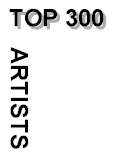
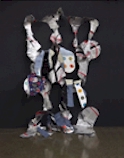
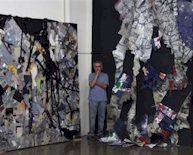
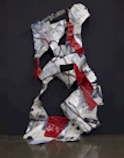

 Find
out how much an artwork of Martin Kippenberger is worth
Find
out how much an artwork of Martin Kippenberger is worth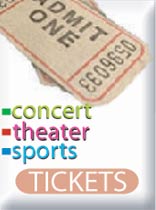




 The Happy End of Franz Kafka's 'Amerika' 1994 (detail)
© Kippenberger Estate
The Happy End of Franz Kafka's 'Amerika' 1994 (detail)
© Kippenberger Estate  The Happy End of Franz Kafka's 'Amerika' 1994 (detail)
© Kippenberger Estate
The Happy End of Franz Kafka's 'Amerika' 1994 (detail)
© Kippenberger Estate